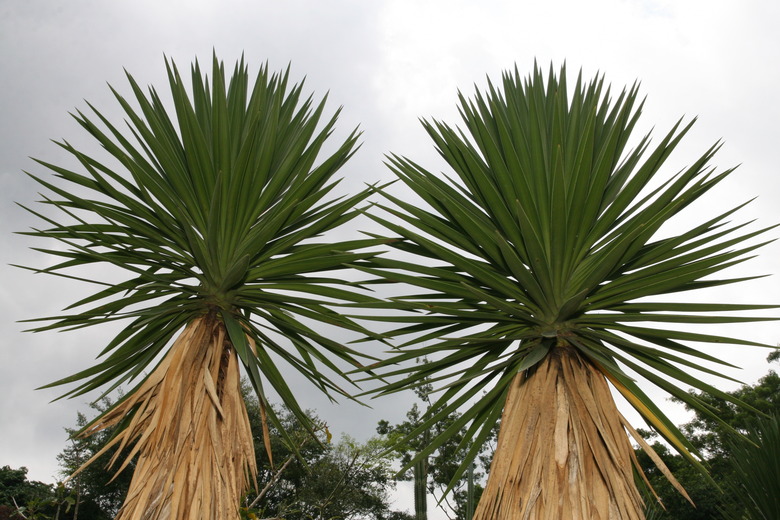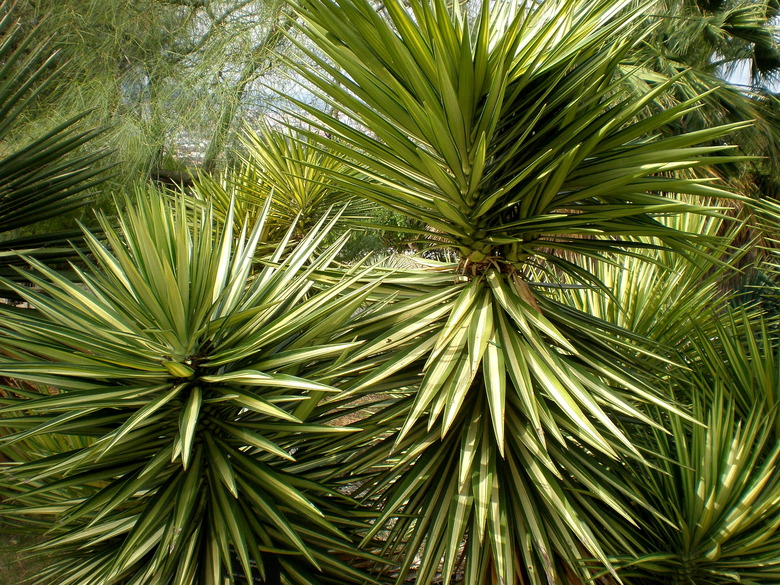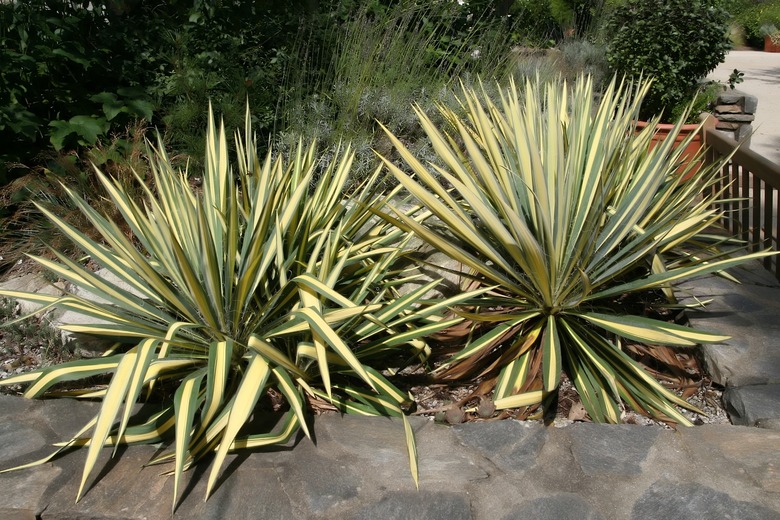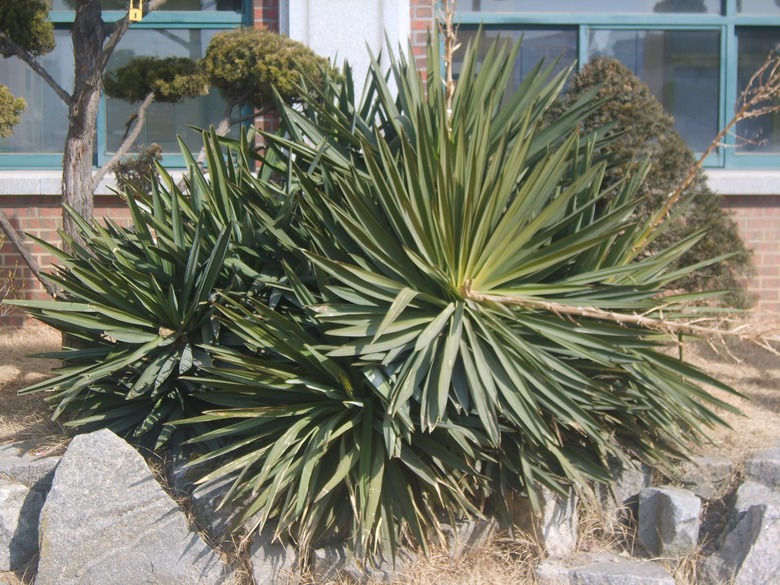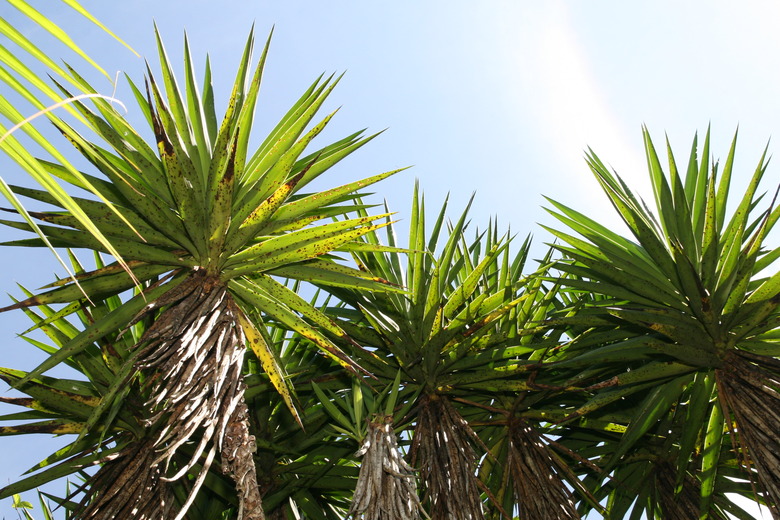How To Care For An Outdoor Yucca Plant
Yuccas (Yucca spp.) include approximately 45 species of evergreen plants distinguished by their sharp, sword-like leaves. They may grow in tree or shrub form.
A yucca plant outdoors requires very little maintenance. Yucca plants are hardy in U.S. Department of Agriculture plant hardiness zones 5 to 11, with specific ranges varying by species.
Outdoor Yucca Plant Identification
Let's take a look at the characteristics of some of the most commonly planted species of yucca. All of these species produce flower stalks with clusters of white, bell-shaped, nodding flowers.
Spanish Bayonet
Species of yucca include the Spanish bayonet (Yucca aloifolia, zones 8 to 11), which is native to Mexico, the Southeastern U.S. and the islands of the West Indies. It has a maximum height of about 10 feet and has very sharp leaves, making safety a concern.
The Spanish bayonet relies on the pronuba moth for pollination. The flowers of this species are white and tinged with purple.
Warning
Because of its sharp leaves, the Spanish bayonet should not be planted in locations with high foot traffic.
Adam's Needle
Adam's needle (Yucca filamentosa, zones 5 to 10), also known as needle palm, is a smaller species of yucca that grows up to 8 feet tall. It has practically no stems.
This species is native to the Central and Eastern U.S. Its range extends from South Carolina to Florida and west to Mississippi.
Spanish Dagger
The Spanish dagger (Yucca gloriosa, zones 6 to 10) occurs naturally in sandy areas along the Eastern coast of the U.S. from North Carolina down to Florida. It has a height of about 5 feet.
Despite its name, the points of this species are not as dangerous as those of the Spanish bayonet.
Spineless Yucca
Native to Mexico and Guatemala, the spineless yucca (Yucca elephantipes, zones 9 to 10) is the largest yucca species, with a height up to 30 feet. It can be grown in containers where it is not winter hardy, though it will grow smaller.
This species, as you might deduce from its name, does not have the spines that most yuccas have.
Outdoor Yucca Plant Care
- Yucca plants do not require a lot of care. They are prized because of their ability to thrive in poor, dry soils. Because they are native to coastal regions, established plants can also handle salt spray.
- Yuccas also have few pest and disease problems. Yuccas do best when they receive full sun, though the Adam's needle can handle a bit more shade than other species.
- To keep yuccas looking their best, remove the flower stalks from the plants when they are finished blooming.
- While outdoor yucca plants may appreciate some moisture during hot, dry stretches of summer, they are adapted to dry conditions and therefore don't require much irrigation. It is best not to water these plants overhead, as this can lead to a condition called crown rot. Spineless yucca plants that are grown in containers should be watered when the soil dries out.
